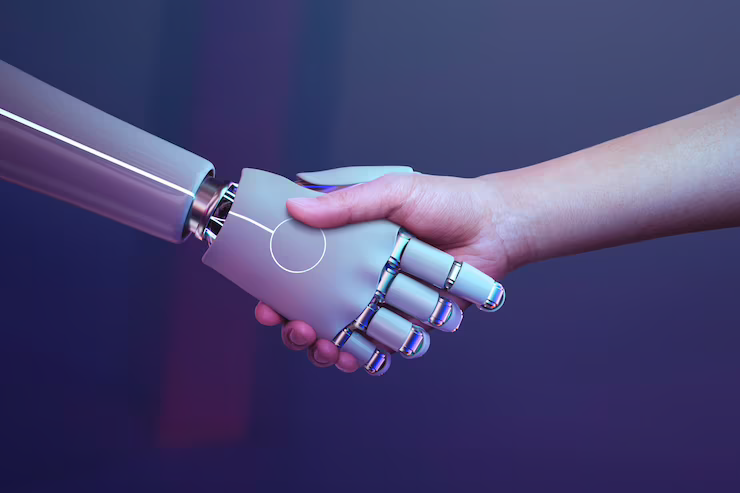
Beyond Boundaries: Unraveling the Marvels of Generative AI and the Future of Creativity
Introduction
Artificial Intelligence (AI) has been a transformative force in technology, propelling us beyond the limitations of traditional computing. As AI continues to evolve, a particularly intriguing development has emerged – Generative AI. This subset of AI is not just about problem-solving; it’s about empowering machines to unleash their creative potential and reshape how we perceive artificial intelligence. In this exploration, we’ll delve deep into the realm of Generative AI, seeking to understand its intricacies, exploring real-world applications, and drawing insightful comparisons with traditional AI. Join us on this comprehensive journey as we unravel the fascinating world of machines creating content autonomously.
What is Generative AI?
Generative AI signifies a paradigm shift in artificial intelligence. Unlike traditional AI approaches that rely on rule-based systems and predefined algorithms, generative AI models possess the remarkable ability to create content on their own. They are designed to understand intricate patterns, learn from vast datasets, and generate original outputs without explicit human programming. This marks a departure from conventional AI, where the emphasis is on problem-solving within predetermined boundaries.
Generative AI, in essence, mirrors the creative processes traditionally associated with human intellect. It can produce art, music, and text with a degree of autonomy that was once thought to be exclusive to human cognition. This revolutionary capability opens up new horizons in various domains, where machines contribute to and, in some cases, redefine the creative landscape.
Examples of Generative AI
Art and Design
In the realm of art and design, generative AI has become a revolutionary tool. Artists and designers now harness the power of algorithms that autonomously create stunning visuals. These algorithms, trained on diverse datasets and guided by the principles of creativity, produce intricate digital paintings, avant-garde designs, and even entirely new forms of artistic expression. Generative AI challenges our traditional understanding of creativity, posing intriguing questions about the intersection of human ingenuity and machine-generated art.
Music Composition
The influence of generative AI extends seamlessly into the world of music composition. By analyzing vast datasets of musical compositions spanning genres and eras, these systems can compose entirely new pieces. The result is a fusion of familiar musical elements and innovative nuances, showcasing how technology can be a powerful muse for composers seeking fresh inspiration. Generative AI in music composition not only generates new sounds but also contributes to the ongoing conversation about the nature of creativity and the role of machines in shaping artistic expression.
Content Creation
The impact of generative AI on content creation is profound. In industries that rely heavily on written content, such as marketing and journalism, generative AI simplifies and accelerates the creative process. Automated systems equipped with generative AI capabilities can generate human-like text, offering a glimpse into a future where content creation is not just a human endeavor. This evolution in content creation raises questions about the balance between human creativity and machine-generated content, pushing us to reconsider traditional notions of authorship and creative ownership.
Generative AI vs Normal AI
Understanding the distinction between generative AI and traditional AI is crucial in appreciating their respective strengths and limitations. Traditional AI operates within rigid frameworks, executing tasks based on pre-programmed rules. Its strength lies in precise, rule-bound activities, making it efficient for tasks with clear instructions and well-defined outcomes.
Generative AI, on the other hand, thrives in situations that demand creativity and adaptability. It doesn’t merely follow instructions; it learns, evolves, and generates novel content based on patterns it discerns from the data it processes. The adaptability of generative AI makes it particularly suited for tasks involving ambiguity, creativity, and innovation.
The key difference lies in adaptability. While traditional AI follows predetermined rules, generative AI adapts and evolves based on the data it processes. This adaptability makes generative AI well-suited for tasks that involve ambiguity and creativity.
ChatGPT and Generative AI
A noteworthy example of generative AI in the realm of natural language understanding is ChatGPT. Powered by the GPT-3.5 architecture developed by OpenAI, ChatGPT isn’t your typical rule-based chatbot. Instead, it can generate human-like responses in real-time conversations, making it a powerful tool in interactive communication.
ChatGPT showcases the potential of generative AI in revolutionizing how we interact with technology. It operates by predicting the next word in a sentence based on the context provided, and through iterative learning, it refines its predictions to generate coherent and contextually relevant text. This versatility extends to various applications, including customer support, virtual assistants, and interactive platforms where understanding and generating contextually relevant text are paramount.
Conclusion
Generative AI stands as a testament to the evolving landscape of artificial intelligence. Its capacity to autonomously create content in diverse domains, coupled with the adaptability showcased by models like ChatGPT, hints at a future where human ingenuity collaborates with machine creativity. As we embrace these advancements, we embark on an exciting journey where the boundaries between human and machine creativity blur, promising a future shaped by the synergy of human insights and AI innovations. In a world where machines not only solve problems but also contribute to the creative process, the possibilities are limitless, challenging us to redefine our relationship with technology and creativity.




Average Rating